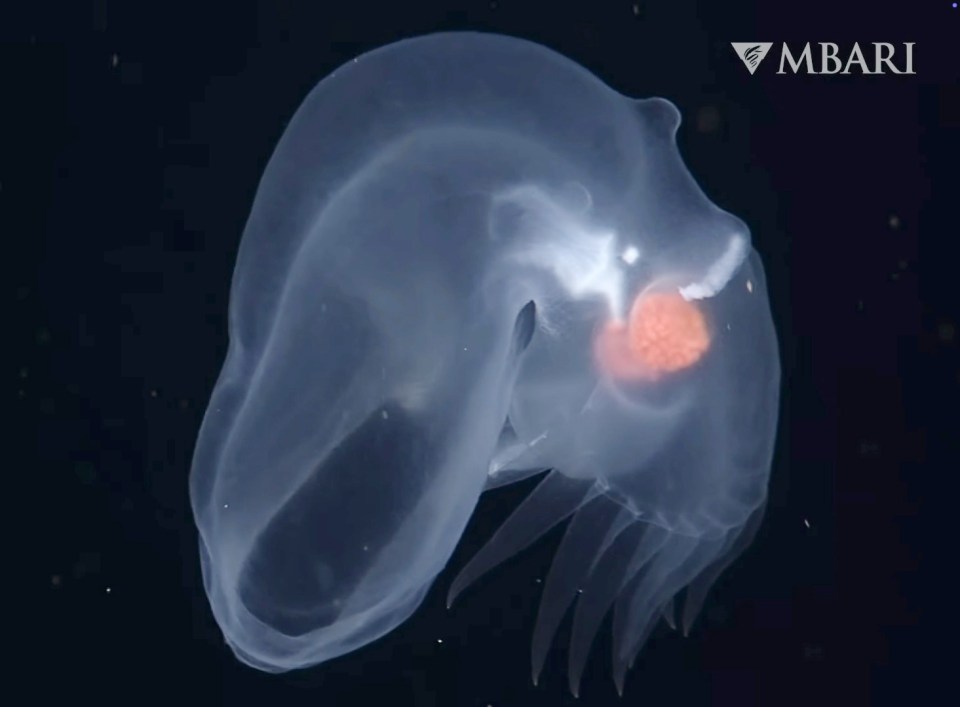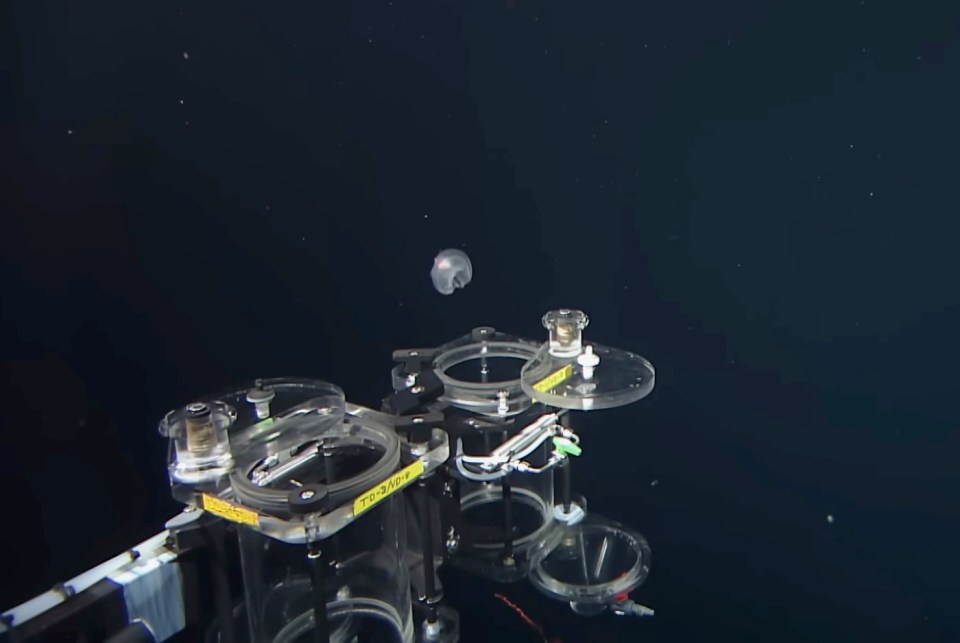A GHOSTLY new species of sea slug has been discovered in the 'midnight zone' - more than 7,000ft below the surface of the Pacific Ocean.
Researchers at the Monterey Bay Aquarium Research Institute (MBARI) caught the "mystery mollusc" ballooning through pitch black waters with its bioluminescent hood and paddle-like tail.
It has a mouth that resembles a Venus fly trap, according to researchers, and organs that glow a bright orange.
This unique mouth shape is used to trap crustaceans, unlike other sea slugs that use a raspy tongue to feed on prey attached to the seafloor.
It only glows a bioluminescent blue when it feels threatened, in an effort to distract hungry predators.
“When we first filmed it glowing with the [remote operating vehicle], everyone in the control room let out a loud ‘Oooooh!’ at the same time. We were all enchanted by the sight,” said MBARI senior scientist Steven Haddock.
READ MORE ON WILDLIFE
“Only recently have cameras become capable of filming bioluminescence in high-resolution and in full color.
"MBARI is one of the only places in the world where we have taken this new technology into the deep ocean, allowing us to study the luminous behavior of deep-sea animals in their natural habitat.”
The "mystery mollusc", as it came to be known by researchers, is a type of nudibranch, or sea slug, which should usually crawl along the seafloor.
They are most commonly found in tide pools, kelp forest, or coral reefs and a small number of them slither on the abyssal seafloor.
Most read in Science
Very few, however, are pelagic - meaning they live in open waters.
The new deep-sea species, which has been given the official name of Bathydevius caudactylus, was first observed by MBARI researchers more than 20 years ago.
With the institute’s remotely operated vehicle, Tiburon, researchers caught a glimpse of the glowing blob over 8,500ft deep during a dive in February 2000.
Now after more than 150 sightings, researchers have published a detailed description of the creature.
What is exciting to me about the mystery mollusc is that it exemplifies how much we are learning as we spend more time in the deep sea, particularly below 2,000 meter.
Steven Haddock, MBARI senior scientist
The Bathydevius caudactylus has been found to live off the Pacific coast of North America, as far north as Oregon and as far south as Southern California.
“What is exciting to me about the mystery mollusc is that it exemplifies how much we are learning as we spend more time in the deep sea, particularly below 2,000 meters," Haddock continued.
"For there to be a relatively large, unique, and glowing animal that is in a previously unknown family really underscores the importance of using new technology to catalog this vast environment."
The hermaphrodite creature possesses both male and female sex organs, like other nudibranchs, and descends to the seafloor to release its eggs.
While the Bathydevius caudactylus certainly shares similarities with other sea slugs, it has enough unique characteristics to be classed as a new species.
Read More on The Sun
MBARI senior scientist Bruce Robison, who led efforts to describe the mystery mollusc, added: "We’ve invested more than 20 years in understanding the natural history of this fascinating species of nudibranch.
"Our discovery is a new piece of the puzzle that can help better understand the largest habitat on Earth."




















